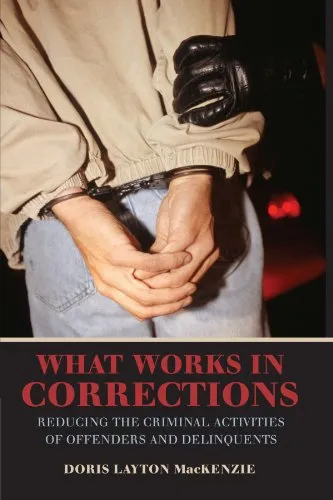What Works in Corrections: Reducing the Criminal Activities of Offenders and Delinquents
4.5
Reviews from our users

You Can Ask your questions from this book's AI after Login
Each download or ask from book AI costs 2 points. To earn more free points, please visit the Points Guide Page and complete some valuable actions.Related Refrences:
Introduction
Welcome to the comprehensive introduction to the book "What Works in Corrections: Reducing the Criminal Activities of Offenders and Delinquents," authored by criminologist Doris Layton MacKenzie. This book serves as an essential resource for those looking into evidence-based methods for reducing recidivism among offenders and delinquents. Addressing policymakers, practitioners, and researchers alike, this book offers critical insights into the efficacy of correctional programs.
Detailed Summary of the Book
The premise of "What Works in Corrections" arises from the critical question: What interventions effectively reduce the criminal activities of offenders and delinquents? Over the decades, policymakers and correctional agencies have faced challenges in identifying and implementing programs that genuinely work. This book provides a systematic review and meta-analysis of correctional interventions, meticulously evaluating various programs that range from cognitive-behavioral therapy to educational and vocational training.
MacKenzie dives deep into each type of intervention, using empirical data to analyze their success rates in reducing recidivism. By differentiating the effective programs from the ineffective ones, this book equips readers with the knowledge needed to develop, support, and advocate for successful correctional initiatives. Additionally, MacKenzie discusses the limitations of conventional approaches and highlights the necessity for innovative strategies in the ever-evolving field of corrections.
Key Takeaways
- Evidence-based programs are essential for reducing recidivism.
- Cognitive-behavioral therapies stand out as one of the most effective interventions.
- The treatment must be tailored to the individual needs of offenders and delinquents.
- Interventions must be implemented with fidelity to achieve desired outcomes.
- Programs that blend education, vocational training, and therapy show promising results.
Famous Quotes from the Book
"To reduce crime effectively, we must move beyond traditional punitive approaches and embrace interventions that are supported by scientific evidence."
"The future of correctional systems relies on our ability to innovate and adapt, learning from evidence rather than sticking to outdated methods."
Why This Book Matters
This book is a pivotal contribution to the field of criminology and corrections. At a time when criminal justice systems worldwide are under scrutiny for their high recidivism rates and inefficient use of resources, MacKenzie's work becomes highly relevant. By advocating for the implementation of evidence-based correctional programs, "What Works in Corrections" provides a powerful argument for reforming current systems.
The book's emphasis on the use of scientific research to guide correctional practices is not just a theoretical proposition but a practical necessity. By aligning interventions with the specific risks and needs of offenders, the book outlines a clear path forward for reducing crime and improving community safety.
In addition to its practical implications, this book serves as an academic cornerstone for students and scholars in criminology and related fields. It not only synthesizes an extensive body of research but also encourages critical thinking and problem-solving, making it indispensable for anyone committed to improving the outcomes of correctional systems.
Free Direct Download
You Can Download this book after Login
Accessing books through legal platforms and public libraries not only supports the rights of authors and publishers but also contributes to the sustainability of reading culture. Before downloading, please take a moment to consider these options.
Find this book on other platforms:
WorldCat helps you find books in libraries worldwide.
See ratings, reviews, and discussions on Goodreads.
Find and buy rare or used books on AbeBooks.
1303
بازدید4.5
امتیاز50
نظر98%
رضایتReviews:
4.5
Based on 0 users review
"کیفیت چاپ عالی بود، خیلی راضیام"
Questions & Answers
Ask questions about this book or help others by answering
No questions yet. Be the first to ask!



